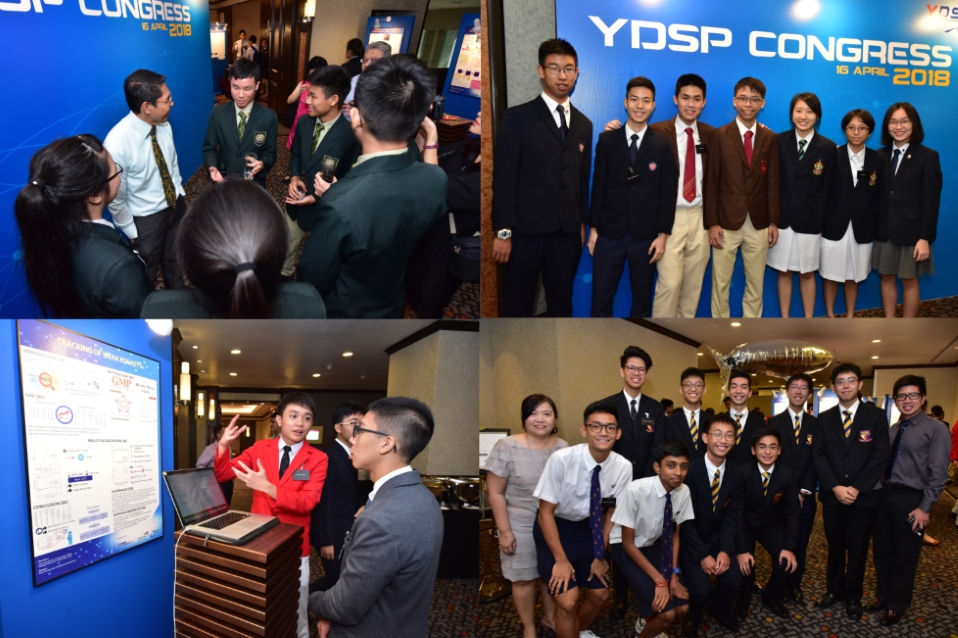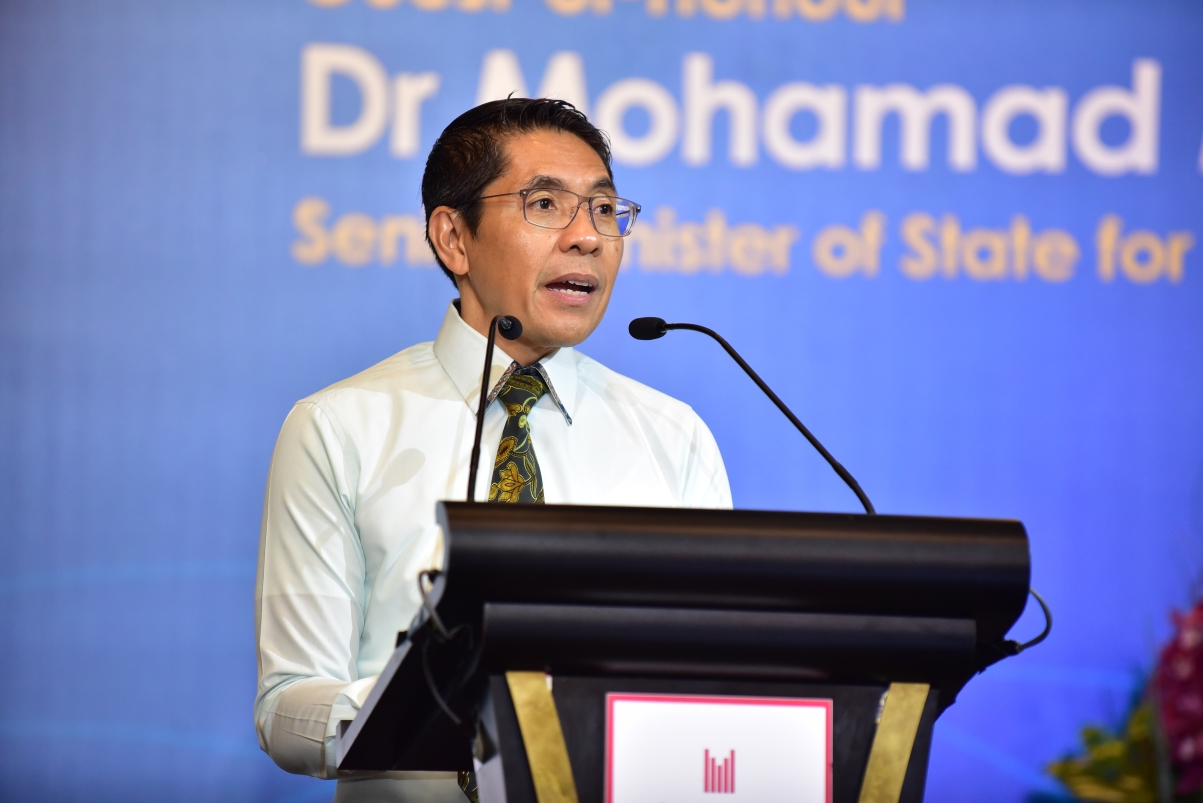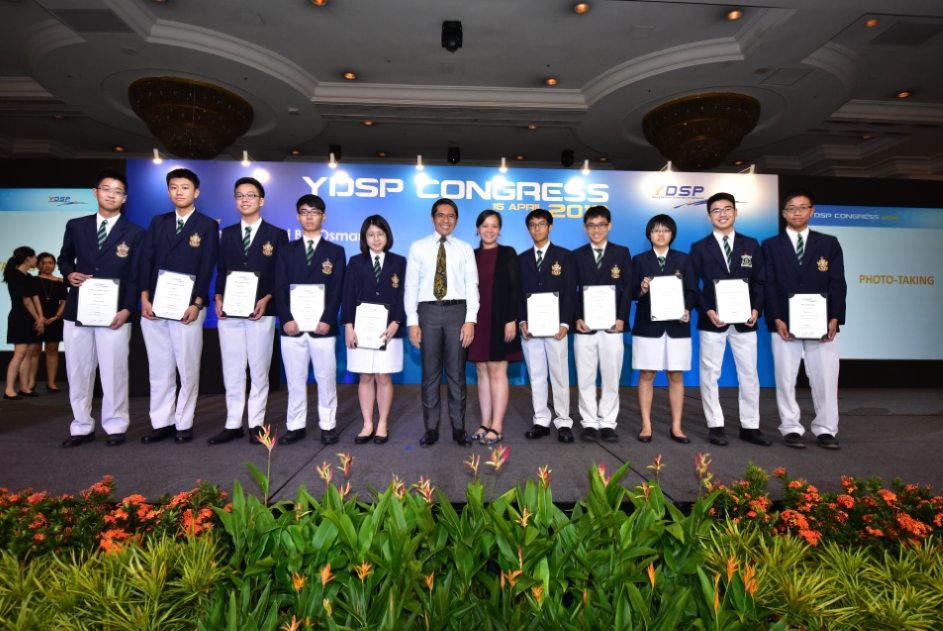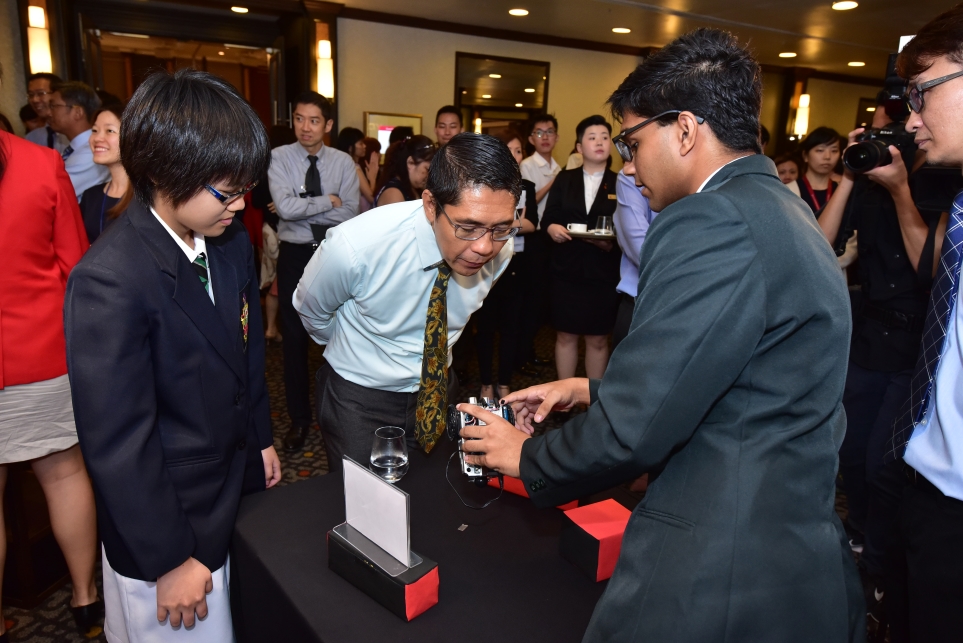16 Apr 2018
Some 50 creative defence technology projects took centre stage during the Young Defence Scientists Programme (YDSP) Congress on 16 April 2018, rounding up the practical research and learning journeys of more than 260 students.

Organised by the Defence Science and Technology Agency (DSTA) and DSO National Laboratories (DSO), the YDSP introduced advanced concepts such as robotics, artificial intelligence (AI), cybersecurity and nanotechnology to spark students’ interest in topics beyond the classroom.
Participants were challenged to explore creative applications of technology for defence through project attachments, lectures and laboratory sessions under the guidance of defence engineers and scientists from DSTA and DSO, as part of the Research@YDSP and YDSP World of Science programmes in 2017.
To mark the culmination of YDSP activities for the year, over 500 students, parents, teachers and mentors attended the Congress. Speaking at the event, Senior Minister of State for Defence Dr Mohamad Maliki Bin Osman highlighted the importance of nurturing a strong Defence Technology Community (DTC).

Noting that the defence area is a hotbed for the growth and development of new and emerging technologies, Dr Maliki said: “Here in Singapore, the DTC has been working with the Singapore Armed Forces to innovate and turn concepts into reality. In the face of new emerging threats and our manpower challenges, we need to rely on ourselves to innovate and achieve a quantum leap in our capabilities...I hope that participating in the YDSP activities has fired your passion in the field and inspired you to join the ranks of our DTC and contribute to making Singapore a safe country for all.”
Dr Maliki also presented YDSP Scholarships, YDSP Academic Awards and DSTA Junior College Scholarships to 160 recipients during the Congress.


After the award ceremony, participants were invited to present their projects on-stage. Valerie Tan, 16, from Dunman High School shared how she learnt to apply machine learning techniques to train AI algorithms to classify objects in video images. This could potentially help to uncover potential threats in cluttered environments with many objects of similar shape or colour.
“This experience completely overturned my preconceived notion of machine learning as a complicated science. While I indeed struggled at the start due to my limited coding knowledge, I was able to learn more about the technicalities of machine learning from my mentors and sharpen my ability to communicate scientific knowledge effectively,” Valerie reflected.
Following the stage presentations, Dr Maliki visited several project booths and interacted with students outside the event hall. One of the projects was an obstacle-avoiding Arduino robot, built and programmed by Ryan Pary, 17, from St. Joseph’s Institution and Avellin Wong, 17, from Raffles Institution.

They demonstrated how their robot could detect and avoid positive and negative obstacles, namely obstacles from above and below ground. This concept could be used to help military robots navigate uneven terrain autonomously, or to help the elderly and wheelchair users to avoid dangerous obstacles and falls.
Ryan recounted why the YDSP was one of his best learning experiences: “YDSP offered many hands-on learning and creative thinking opportunities. Each time we fine-tuned our code and tested the robot, I could see for myself how and why things worked. Being exposed to robotics through YDSP has certainly sparked my interest in this field and Electrical Engineering as well.”
Ryan’s mentor, Head Capability Development (C3 Development) Charles Ng was glad to hear that students were inspired to continue learning about defence science and technology. “YDSP gives students very good hands-on exposure to advanced concepts outside of their school curriculum. It was very meaningful and exciting to contribute to their learning process.”
